Do Plastic Planters Look Cheap? Unveiling the Truth Behind Plastic vs. Other Materials
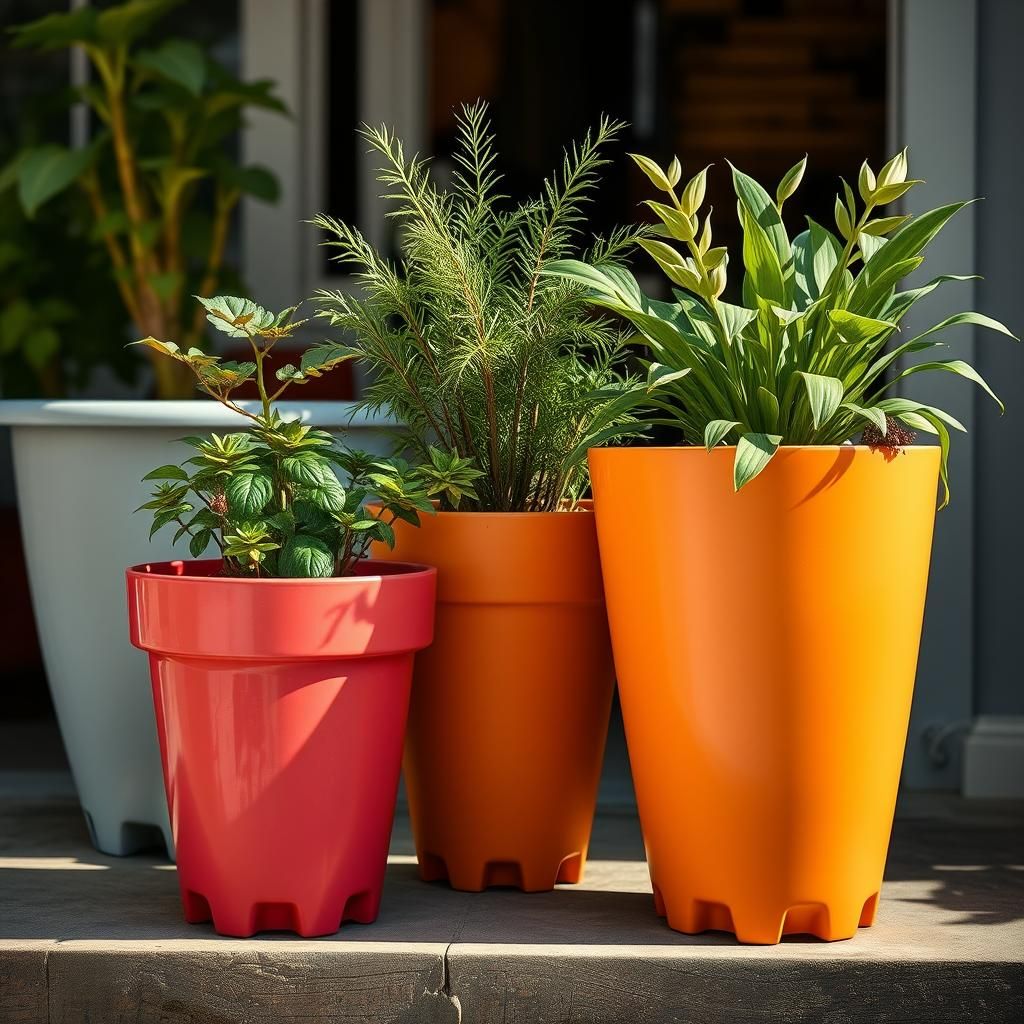
When it comes to gardening and home decor, the choice of planter can significantly influence the aesthetic and perceived value of your space. Plastic planters, often seen as budget-friendly options, have long been criticized for looking cheap compared to materials like ceramic, wood, or metal. However, the reality is more nuanced. This article explores the factors that contribute to the visual appeal of plastic planters, comparing them to their counterparts made from various materials. By examining design, texture, and functionality, we aim to unveil the truth behind the perception of plastic planters in the world of gardening.
Do Plastic Planters Look Cheap?
Plastic planters can indeed give off a cheap appearance, especially when compared to materials like ceramic, terracotta, or metal. While high-quality plastics can mimic the look of more expensive materials and offer durability and lightweight convenience, lower-quality options may not provide the same aesthetic appeal. Additionally, the finish and texture of plastic can sometimes appear less elegant, which contributes to the perception of cheapness. However, it's important to note that many modern plastic planters come in various styles and designs, making them a versatile option that can fit into different decor themes while remaining budget-friendly.
Benefits of Using Plastic Planters
Plastic planters offer numerous benefits, including their lightweight nature, durability, and resistance to breakage. They are also typically less expensive than their ceramic or metal counterparts, making them a popular choice for both indoor and outdoor use. Furthermore, plastic planters come in a wide range of colors and designs, allowing for greater variety in aesthetic options. This versatility means that, when chosen thoughtfully, plastic planters can complement a variety of decor styles without appearing cheap.
Comparison with Other Materials
When comparing plastic planters to other materials, it's essential to consider the differences in appearance, cost, and weight. Ceramic planters, for instance, are generally heavier and often more visually appealing but can crack easily and are more expensive. In contrast, metal planters may provide a more contemporary look but can rust over time if not treated properly. While plastic planters may look less natural compared to these materials, advancements in design have allowed for greater realism in their appearance, making them increasingly attractive options.
Design Trends in Plastic Planters
Recent design trends in plastic planters showcase an emphasis on realism and creativity. Many brands are now producing planters that closely resemble natural materials such as stone or wood, thus blending the durability of plastic with the sophisticated styles of its counterparts. Innovations such as matte finishes, intricate textures, and vibrant color options are making plastic planters much more desirable, allowing them to seamlessly blend into various landscapes or interior environments without looking cheap.
Environmental Considerations
While plastic planters may be perceived as less luxe, their environmental impact cannot be overlooked. Many manufacturers are now producing eco-friendly plastic planters made from recycled materials or designed to be recyclable themselves. Choosing these sustainable options can help mitigate the environmental concerns associated with traditional plastics, and promotes responsible consumption without sacrificing style. This also enhances their appeal as practical garden accessories, bridging the gap between budget and sustainability.
Maintenance of Plastic Planters
One of the appealing aspects of plastic planters is their low maintenance. They are often resistant to fading, chipping, and cracking, which are common issues with other material types. Cleaning plastic planters is typically a straightforward task, requiring only soap and water to maintain their appearance over time. This ease of maintenance can enhance their appeal compared to more expensive options, which may require additional care to keep them looking their best. Consequently, plastic planters can serve as a practical choice for those who want a stylish yet durable gardening solution.
| Feature | Plastic Planters | Ceramic Planters | Metal Planters |
|---|---|---|---|
| Weight | Lightweight | Heavy | Medium |
| Durability | High | Moderate | High (with rust concerns) |
| Cost | Low | High | Varies |
| Maintenance | Low | Moderate | Moderate |
| Aesthetic Variety | High | High | Moderate |
What are the disadvantages of plastic plant pots?
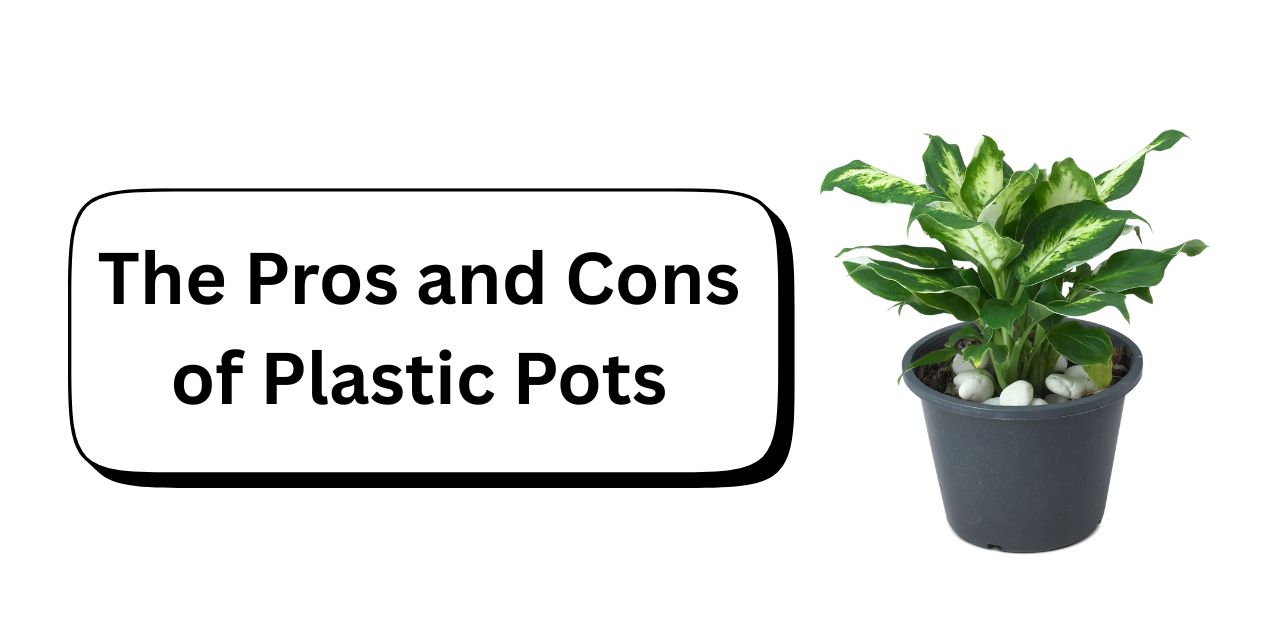
Plastic plant pots have become a staple in the gardening community due to their lightweight nature and affordability. However, they come with several disadvantages that can affect both plants and the environment.
1. Environmental Impact
Plastic pots are often made from non-biodegradable materials, which means they persist in landfills and contribute to environmental pollution. The production process for plastic also involves the extraction of fossil fuels, leading to resource depletion. Moreover, when plastics break down, they can release harmful chemicals into the soil and water systems.
- Persistent Waste: Plastic pots can take hundreds of years to decompose.
- Chemical Leaching: Substances from the pots may leach into soil and water.
- Resource Intensive: Manufacturing them requires significant amounts of energy and materials.
2. Temperature Regulation
Plastic pots do not provide the same thermal insulation as natural materials like clay or wood. They can heat up quickly in the sun, leading to root damage or stress for the plants. On colder days, they may not retain heat effectively, which can further destabilize plant health.
- Overheating: Roots can overheat, causing moisture loss and stress.
- Fluctuating Temperatures: Rapid temperature changes can shock plants.
- Limited Breathability: Reduced air circulation can affect root respiration.
3. Limited Durability
While plastic pots can be lightweight, they are not always robust. Many are prone to cracking or breaking, especially when exposed to the elements. This can lead to loss of soil, water, and ultimately, the plant itself.
See also: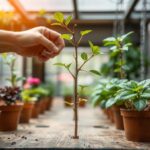
- Cracking: Sudden temperature changes can cause pots to split.
- Fading: UV rays can degrade the plastic over time.
- Wear and Tear: Frequent handling can lead to premature failure.
4. Root Binding and Drainage Issues
Plastic pots often have limited drainage options, which can result in poor water flow. This can lead to conditions such as root binding, where plants' roots grow too tightly against the pot's walls, restricting growth.
- Poor Drainage: Soil can retain excess water, causing root rot.
- Root Binding: Roots may circle around the edges, stunting growth.
- Limited Size Variation: Many plastic pots come in standard sizes, which may not suit all plants.
5. Aesthetic Limitations
Plastic pots are often criticized for their appearance. They can lack the natural aesthetics that materials like clay or wood offer, which may detract from the overall beauty of a garden or indoor space.
- Limited Design: Fewer options for true-to-life aesthetics.
- Color Fading: Bright colors may fade over time, looking unattractive.
- Inconsistent Styles: Often not matching other garden decor or materials.
Should you use plastic planters?
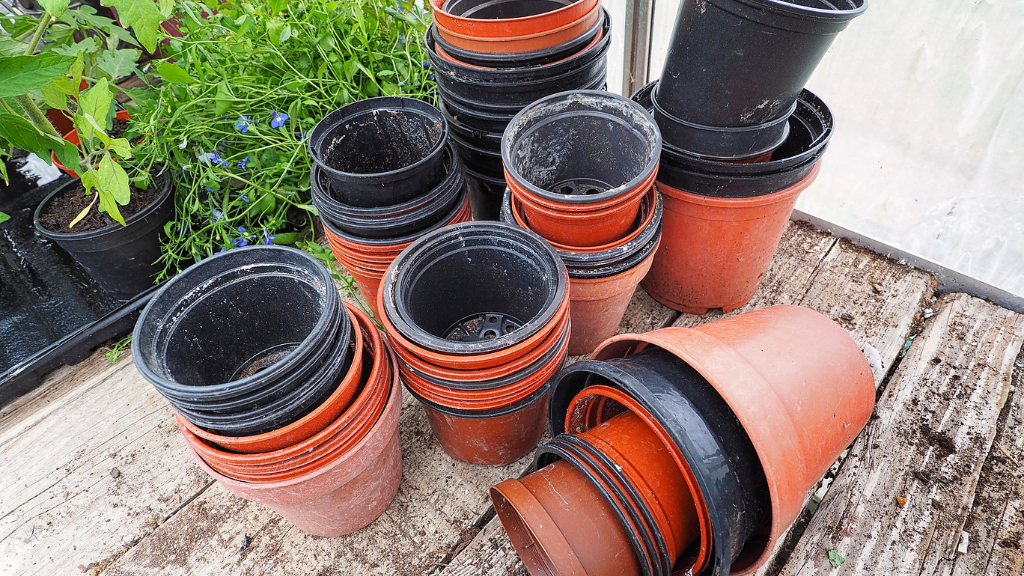
Environmental Impact of Plastic Planters
Using plastic planters can have a significant impact on the environment. Unlike biodegradable materials, plastic does not decompose easily and can lead to long-term pollution in landfills and oceans. However, it's essential to consider how plastic planters can be involved in sustainable practices:
- Recyclability: Many plastic planters are made from recyclable materials, and if disposed of correctly, they can be reused in the production of new plastic items.
- Durability: Plastic planters have a long lifespan, which means fewer replacements are needed over time, potentially reducing waste.
- Lightweight: Their lightweight nature reduces the carbon footprint associated with transportation compared to heavier materials.
Benefits of Using Plastic Planters
Plastic planters offer several advantages that can make them a suitable choice for gardeners of all skill levels. Here are some benefits:
- Cost-effective: Plastic planters are generally less expensive than their ceramic or wooden counterparts, making them accessible for a wide range of budgets.
- Variety of Styles: Plastic planters come in numerous colors and designs, allowing for creative expressions in garden decor.
- Lightweight: This feature makes them easier to move around, which is especially beneficial for large pots or when rearranging plants.
Considerations for Plant Health
When using plastic planters, it's essential to pay attention to certain factors that can influence plant health. The following points should be considered:
- Drainage: Ensure that plastic planters have proper drainage holes to prevent waterlogging, which can lead to root rot.
- Heat Retention: Plastic tends to retain heat, which can be beneficial or detrimental depending on the environmental conditions; be mindful of how this affects your plants.
- Soil Quality: Choosing the right soil mix is crucial, as plastic planters can sometimes lead to faster drying out of the soil.
Alternatives to Plastic Planters
While plastic planters are popular for various reasons, there are several alternatives worth considering. These options may align better with sustainable practices or aesthetic preferences:
- Ceramic Planters: Often more stylish and heavier, ceramic planters provide good insulation but can be more fragile.
- Wooden Planters: These are biodegradable and blend well with natural settings but may require treatment to resist rot.
- Biodegradable Options: Made from materials like coconut coir or recycled paper, these planters are a more eco-friendly choice.
Proper Care for Plastic Planters
To maximize the lifespan and functionality of plastic planters, proper care and maintenance are essential. Here are some tips:
- Regular Cleaning: Cleaning plastic planters prevents the buildup of algae and pests that can harm plants.
- Storage: During off-seasons, store plastic pots in a shaded and dry area to prevent damage from extreme weather conditions.
- Inspect for Cracks: Regularly check for signs of wear or damage, and replace them if needed to ensure plants remain healthy.
Are fabric planters better than plastic?
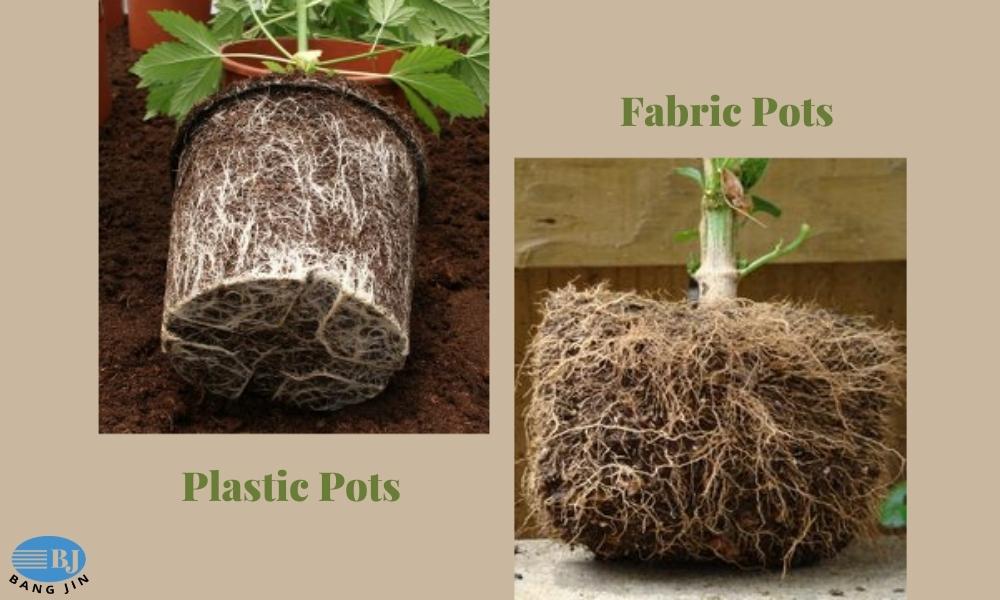
The debate between fabric and plastic planters involves various factors such as aeration, drainage, temperature regulation, and environmental impact. Here’s a detailed look into why fabric planters may be considered superior to plastic options.
Benefits of Aeration
One of the significant advantages of fabric planters is their ability to provide excellent aeration to plant roots. Unlike plastic planters that can restrict airflow, fabric planters allow air to circulate, which promotes healthier root growth. This results in:
- Enhanced root development: Roots can grow more robustly when they receive adequate oxygen.
- Prevention of root circling: The breathable material encourages roots to spread outwards rather than circle around.
- Improved nutrient uptake: Healthy roots can absorb nutrients more efficiently.
Water Drainage Efficiency
Fabric planters excel in drainage, preventing overwatering and reducing the risk of root rot. The porous nature of the fabric allows excess water to escape freely, which is crucial for plant health. Key points include:
See also: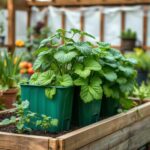
- Consistent moisture levels: They help maintain balanced moisture in the soil.
- Reduced waterlogging: Excess water drains away quickly, minimizing the chances of overwatering.
- Better soil quality: Well-drained soil supports beneficial microbial activity.
Temperature Regulation
Another compelling aspect of fabric planters is their ability to regulate temperature. The breathable fabric insulates the soil, protecting it from extreme heat and cold. This leads to several advantages, such as:
- Reduced heat stress: Plants are less likely to suffer from overheating in hot weather.
- Protection against frost: Insulation helps keep the soil warmer during cold nights.
- Stable growing conditions: Consistent temperatures contribute to optimal plant growth.
Environmental Impact
When comparing the environmental impact of fabric versus plastic planters, fabric often comes out ahead. Many fabric planters are made of recycled materials or sustainable fibers, which can reduce their ecological footprint. Consider these points:
- Biodegradable options: Many fabric planters break down over time, unlike plastic, which can persist for centuries.
- Less reliance on fossil fuels: Fabric planters can often be produced with fewer resources.
- Encouragement of eco-friendly practices: Using sustainable materials promotes a shift towards greener gardening solutions.
Longevity and Durability
Lastly, fabric planters often prove to be more durable compared to their plastic counterparts. While plastic can become brittle and deteriorate over time due to exposure to sunlight, fabric planters are designed to withstand various weather conditions. Key benefits include:
- Resilience to wear and tear: Fabric can endure harsh elements without breaking down quickly.
- Reusability: Many fabric planters can be washed and reused multiple seasons.
- Lightweight and portable: Fabric planters are easier to move, making them ideal for changing garden layouts.
Do plants do better in ceramic or plastic pots?

The choice between ceramic and plastic pots can significantly impact plant growth, drainage, and overall health. Both materials have their advantages and disadvantages, which can influence how well plants thrive in their environments.
Water Retention
Ceramic pots tend to have a more porous structure compared to plastic pots, which can affect how they retain moisture. This can be beneficial or detrimental depending on the needs of the plant.
- Ceramic pots allow for better airflow, leading to evaporation that can help prevent overwatering.
- Plastic pots retain moisture longer, which may be advantageous for plants that require more hydration.
- Choosing the right pot depends on the specific watering needs of the plant species.
Temperature Control
The material of the pot also influences temperature regulation. Ceramic pots can provide better insulation than their plastic counterparts.
- Ceramic pots can maintain a more stable temperature, protecting roots from extreme weather.
- Plastic pots may heat up quickly in the sun, which can stress the roots of sensitive plants.
- It’s important to consider the climate and location when choosing between ceramic and plastic pots.
Weight and Stability
The weight of the pot can affect its stability, especially for larger plants.
- Ceramic pots are typically heavier, providing more stability against tipping over.
- Plastic pots are lighter and easier to move, but they may require additional measures to ensure plants don’t topple over.
- Consider the size and growth habit of the plant when selecting a pot for stability.
Cost and Aesthetics
Cost and aesthetic appeal can also be significant factors in deciding between ceramic and plastic pots.
- Ceramic pots often come at a higher price point but provide a classic look that enhances home decor.
- Plastic pots are generally more affordable and come in various colors and designs.
- Balance the budget with aesthetic preferences and the specific requirements of the plants.
Durability and Longevity
The lifespan of the pots needs to be considered, as this can affect long-term investment.
- Ceramic pots are generally more durable and can withstand outdoor conditions better than plastic.
- Plastic pots can degrade over time, especially when exposed to sunlight, which may lead to cracking.
- Choosing a pot based on durability is important for ensuring the health of the plants over time.
Questions from Our Readers
Do plastic planters look cheap?
Plastic planters can sometimes be perceived as cheap due to their lightweight nature and the variety of styles available. However, many modern plastic planters are designed to mimic the appearance of ceramic or stone options, offering a more upscale look. The key is to choose higher-quality plastic planters that combine aesthetics with durability.
Are plastic planters durable?
Yes, plastic planters are generally very durable and resistant to cracking or breaking, especially in outdoor conditions. They are designed to withstand various weather elements, making them a practical choice for gardeners who want long-lasting solutions without the risk of damage that comes with heavier materials.
See also:
Can plastic planters be used for indoor plants?
Absolutely, plastic planters are suitable for indoor plants as they are lightweight and can easily be moved. Furthermore, many plastic planters come with drainage holes, which help prevent overwatering and ensure the health of the plants while offering a stylish addition to your home decor.
How do I make plastic planters look more attractive?
To enhance the appearance of plastic planters, consider painting them with non-toxic spray paint or wrapping them in natural materials like jute or bamboo. Additionally, grouping them together with varying heights and plant types can create a more polished and visually appealing display in your garden or home setting.
https://youtube.com/watch?v=YJAgj9NeofY
If you want to read more articles like Do Plastic Planters Look Cheap? Unveiling the Truth Behind Plastic vs. Other Materials, we recommend you check out our Planter category.
Leave a Reply
Related Articles